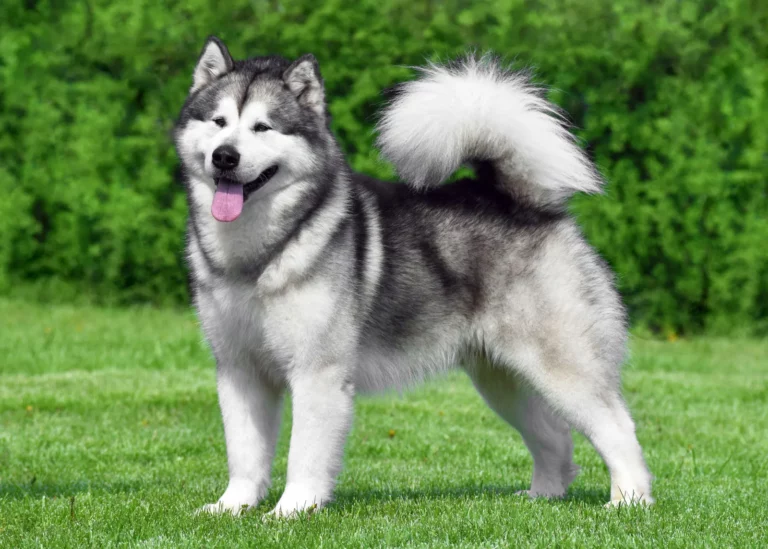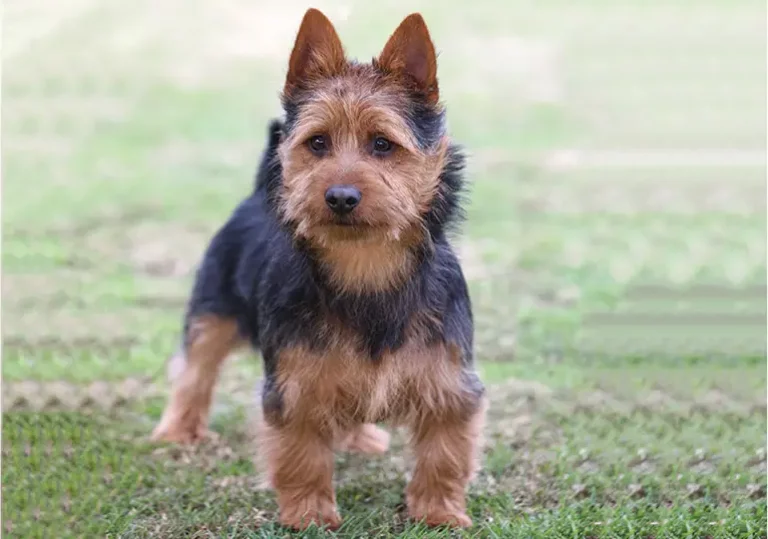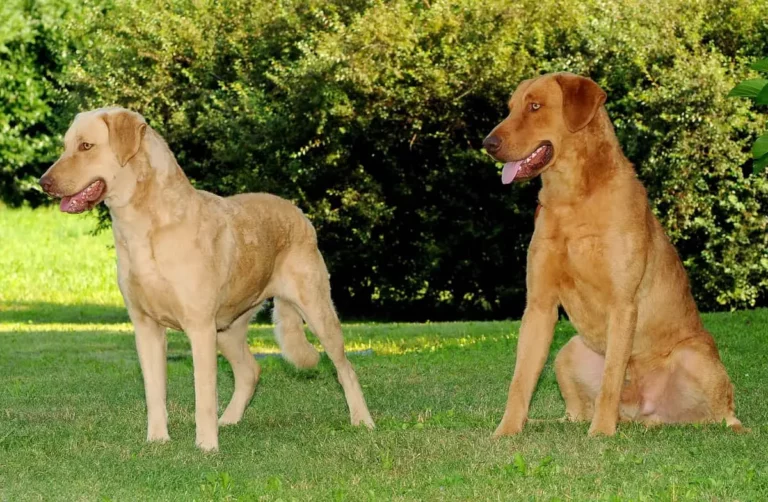The Ultimate Guide to Feeding Rice to Dogs with Diarrhea
Dealing with a dog suffering from diarrhea can be challenging, and finding the right food to help alleviate their symptoms is crucial. Rice is a bland, easily digestible food that has been used as a dietary aid for dogs with diarrhea for many years.
In this blog post, we’ll explore the benefits of feeding rice to dogs with diarrhea, the ideal types of rice to use, and how to prepare and serve it to help your furry friend recover.
It’s important to remember that each dog is unique, and it’s always best to consult your veterinarian before making significant changes to your pet’s diet.
So, grab your apron and let’s dive into the world of rice for dogs with diarrhea!
Why Feed Rice to a Dog with Diarrhea?
When your canine companion is experiencing diarrhea, finding a suitable food to help soothe their digestive system is essential. Rice has long been a go-to option for dog owners dealing with this unpleasant issue, and here’s why:
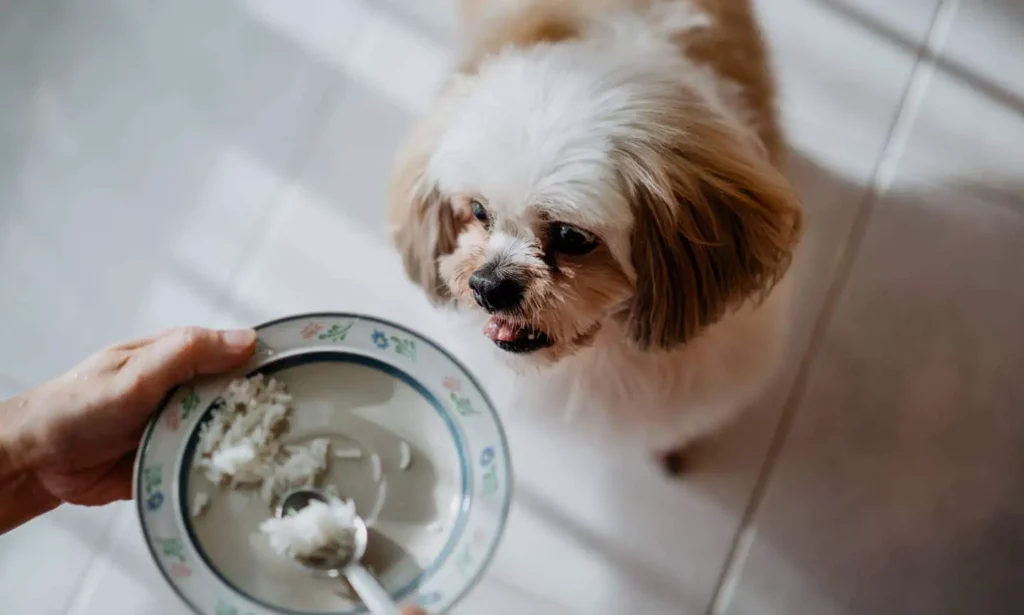
Easily digestible
Rice is known for its easy digestibility, making it gentle on your dog’s stomach. This allows their digestive system to rest and recover from the irritation caused by diarrhea.
Soothing properties
The starchy nature of rice provides a soothing effect on the dog’s intestines, helping reduce inflammation and discomfort associated with diarrhea.
Soluble fiber
Rice is a good source of soluble fiber, which absorbs water and helps firm up the stool. This type of fiber also slows down digestion, allowing for better absorption of nutrients and contributing to your dog’s recovery.
Low-fat and low-fiber
Diarrhea can be exacerbated by high-fat or high-fiber foods, making rice an excellent option for dogs in need of a bland and easily digestible meal.
Widely available and affordable
Rice is a pantry staple in many households, making it a convenient and cost-effective option for treating your dog’s diarrhea.
Remember, while rice can be a valuable dietary aid during diarrhea episodes, it should not be used as a long-term solution. It’s important to transition your dog back to a balanced diet once they have recovered, as rice alone does not provide all the essential nutrients your dog needs. Always consult your veterinarian for guidance tailored to your dog’s specific needs and health conditions.
Types of Rice Suitable for Dogs with Diarrhea
When feeding rice to your dog to help with their diarrhea, it’s essential to choose the right type of rice to ensure the best results. Here’s a comparison of the two most common types of rice and their suitability for dogs with diarrhea:
- White rice: White rice is the preferred choice for dogs with diarrhea. This is because it has had the husk, bran, and germ removed during processing, making it easier to digest. Additionally, white rice is less likely to cause gas or bloating, which could potentially worsen your dog’s condition.
- Brown rice: Although brown rice is generally considered healthier due to its higher fiber and nutrient content, it’s not the ideal choice for dogs with diarrhea. The increased fiber can be harder for your dog to digest, potentially irritating their already sensitive digestive system.
When preparing rice for your dog, it’s essential to cook it plain, without any added salt, spices, or seasoning. Over-seasoned or undercooked rice can be challenging for your dog to digest and may cause more harm than good. Instead, cook the rice thoroughly and ensure it is soft and easily digestible to promote a smoother recovery for your furry friend.
How to Prepare Rice for Your Dog
When it comes to preparing rice for your dog with diarrhea, the key is to keep it simple, plain, and well-cooked. Follow these steps to make easily digestible rice that will help your dog on the road to recovery:
1. Measure the rice
Use a 1:3 ratio of rice to water. This means for every cup of rice, you’ll need three cups of water. Adjust the quantity based on your dog’s size and appetite, following the portion guidelines discussed later in this blog post.
2. Rinse the rice
Place the measured rice in a fine mesh strainer and rinse it under cold water. This helps remove any excess starch, which can cause gas and bloating in your dog.
3. Cook the rice
Combine the rinsed rice and water in a pot. Bring the mixture to a boil, then reduce the heat to low, and cover the pot. Allow the rice to simmer for about 20-25 minutes or until it’s soft and well-cooked.
4. Fluff the rice
Once the rice is cooked, remove it from the heat and let it sit for about 5 minutes with the lid still on. Then, use a fork to fluff the rice, ensuring it’s evenly cooked and not sticking together.
5. Cool the rice
Allow the rice to cool down to room temperature before serving it to your dog. This will prevent any accidental burns or discomfort for your pet.
By following these steps, you’ll be able to prepare plain, well-cooked rice that will help alleviate your dog’s diarrhea symptoms. Remember, when dealing with diarrhea, it’s best to keep your dog’s food as simple and easy to digest as possible.
Combining Rice with Other Foods for a Complete Meal
While rice is a great base for your dog’s diarrhea-friendly meal, it’s essential to provide them with additional nutrients and protein to help their recovery. Here are some recommendations for combining rice with other foods to create a complete and balanced meal:
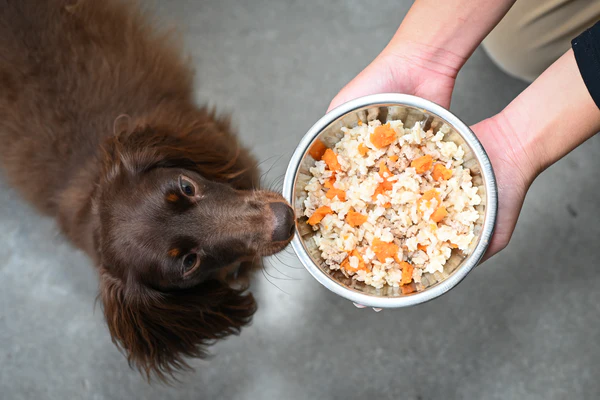
- Add lean protein: Chicken or turkey breast without skin is an ideal choice to provide your dog with a source of lean protein. Make sure the meat is boiled or steamed, without any added seasonings, oils, or fats. This will ensure that it’s easily digestible and doesn’t add unnecessary stress to your dog’s digestive system.
- Follow the proper protein-to-rice ratio: A general rule of thumb is to mix two parts rice with one part lean protein. This ratio provides a good balance of nutrients and helps firm up your dog’s stool without overwhelming their system.
- Consider other bland foods: In some cases, your veterinarian may recommend adding other bland and easily digestible foods to your dog’s diet, such as pumpkin or sweet potato. These can be cooked and mashed, then mixed with the rice and protein to create a more varied and balanced meal.
- Avoid fatty or spicy foods: Steer clear of any high-fat or spicy foods, as they may worsen your dog’s diarrhea symptoms. Stick to plain, unseasoned ingredients that are easy on the stomach.
Remember that it’s crucial to consult your veterinarian before adding new ingredients to your dog’s diet, especially when they’re experiencing diarrhea. They can provide personalized recommendations based on your dog’s specific needs and health conditions.
How Much Rice to Feed Your Dog with Diarrhea
Determining the right amount of rice to feed your dog can be a bit tricky, as every dog’s needs will vary depending on factors like their size, weight, and the severity of their diarrhea. Here are some general guidelines to help you figure out the appropriate serving size for your dog:
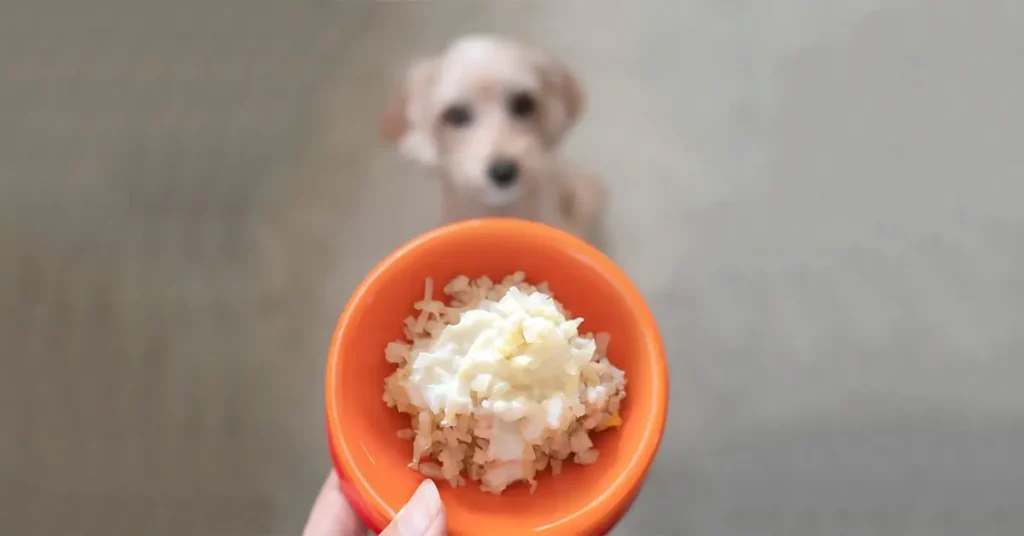
Base the portion size on your dog’s weight
As a starting point, you can use the following recommendations for daily rice intake:
- Small dogs (10-30 lbs): 1/4 to 1/2 cup of cooked rice
- Medium dogs (30-60 lbs): 1/2 to 1 cup of cooked rice
- Large dogs (60-90 lbs): 1 to 1 1/2 cups of cooked rice
- Extra-large dogs (90+ lbs): 1 1/2 to 2 cups of cooked rice
Consider the severity of the diarrhea
If your dog’s diarrhea is particularly severe, you may need to adjust the portion size to ensure they’re receiving adequate nutrition without overwhelming their digestive system. In such cases, consult your veterinarian for personalized advice.
Monitor your dog’s condition
Keep a close eye on your dog’s stool consistency and overall health. If their diarrhea improves but doesn’t fully resolve, you may need to adjust the portion size or consult your veterinarian for further guidance. If your dog’s condition worsens or they experience other symptoms like vomiting or lethargy, contact your veterinarian immediately.
Adjust gradually
If you need to change the amount of rice you’re feeding your dog, do so gradually to avoid sudden dietary changes that could further upset their stomach.
It’s important to remember that these are general guidelines, and your dog’s specific needs may differ. Always consult your veterinarian for tailored advice on the best feeding plan for your dog during a bout of diarrhea.
Transitioning Your Dog Back to Regular Food
Once your dog’s diarrhea has improved and their stools have returned to normal, it’s time to transition them back to their regular diet. Gradually reintroducing regular food is essential to avoid upsetting their digestive system once again. Follow these steps to ease your dog back into their normal feeding routine:
- Gradual reintroduction: Start by mixing a small amount of your dog’s regular food with the rice and protein mixture they’ve been eating. Over the course of several days, gradually increase the proportion of regular food while decreasing the amount of rice and protein.
- Monitor your dog’s progress: Keep a close eye on your dog’s stool consistency and overall health throughout the transition process. If you notice any signs of diarrhea returning or other concerning symptoms, pause the reintroduction and consult your veterinarian.
- Signs your dog is ready for normal food: A successful transition back to regular food is marked by your dog’s ability to tolerate their normal diet without any recurrence of diarrhea or other adverse reactions. Once your dog is comfortably eating their regular food without any issues, you can discontinue feeding rice and protein.
- Preventing future diarrhea episodes: To reduce the risk of future diarrhea occurrences, ensure your dog maintains a well-balanced diet, receives regular veterinary check-ups, and avoids potential dietary triggers, such as table scraps or sudden changes in their diet.
Remember, it’s essential to consult your veterinarian throughout the transition process, as they can provide valuable guidance and support tailored to your dog’s specific needs.
When to Seek Veterinary Assistance
While rice can be a helpful dietary aid for dogs experiencing mild to moderate diarrhea, it’s crucial to recognize when professional veterinary help is needed. Here are some scenarios in which you should seek veterinary assistance:
- Severe or persistent diarrhea: If your dog’s diarrhea is severe, bloody, or lasts for more than 48 hours despite feeding them rice and lean protein, contact your veterinarian immediately. This could indicate a more serious underlying issue that requires professional attention.
- Other concerning symptoms: If your dog exhibits other symptoms along with diarrhea, such as vomiting, lethargy, loss of appetite, dehydration, or weight loss, seek veterinary help right away. These signs may suggest a more severe problem that requires prompt medical intervention.
- No improvement with rice: If your dog’s diarrhea does not improve after feeding them rice and lean protein for a few days, consult your veterinarian. They may need to explore other potential causes of your dog’s diarrhea or recommend alternative treatments.
- Pre-existing health conditions: If your dog has any pre-existing health issues, such as kidney disease, diabetes, or food allergies, it’s crucial to consult your veterinarian before making any changes to their diet.
Remember, when in doubt, it’s always best to seek the advice of a qualified veterinarian. They can provide personalized guidance based on your dog’s specific health needs and ensure they receive the most appropriate care for their condition.
Frequently Asked Questions
Can I feed my dog rice every day?
While rice can be beneficial for dogs with diarrhea, it’s not recommended as a daily staple in their diet. Rice should only be fed temporarily, and dogs should transition back to a well-balanced diet once their condition improves.
How long should I feed my dog rice for diarrhea?
The duration of feeding rice to a dog with diarrhea may vary depending on the severity of the condition. Generally, 2-3 days of rice-based meals can help, but always consult a veterinarian for guidance tailored to your dog’s specific needs.
Can I feed my dog instant rice or rice products instead of cooked rice?
It’s best to stick to plain, well-cooked white rice for dogs with diarrhea. Instant rice and rice products may contain additives, preservatives, or seasonings that could worsen your dog’s condition.
Is it okay to add vegetables to the rice and chicken mix for my dog?
While some vegetables can be beneficial, it’s best to consult your veterinarian before adding any new ingredients to your dog’s diet during a diarrhea episode. Some vegetables may be hard for your dog to digest, exacerbating their symptoms.
Final Thoughts
Dealing with a dog suffering from diarrhea can be a challenging and worrisome experience for pet owners. Feeding your dog rice, combined with lean protein, can provide a gentle and soothing meal that can help alleviate their symptoms and promote a smoother recovery. Remember to consult your veterinarian before making any significant dietary changes, monitor your dog’s condition closely, and seek professional help if their symptoms persist or worsen.
By following the advice in this blog post, you’ll be well-equipped to support your furry friend on their path to recovery and ensure they return to their usual happy and healthy self in no time. Happy feeding and may your dog’s tummy troubles be quickly resolved!


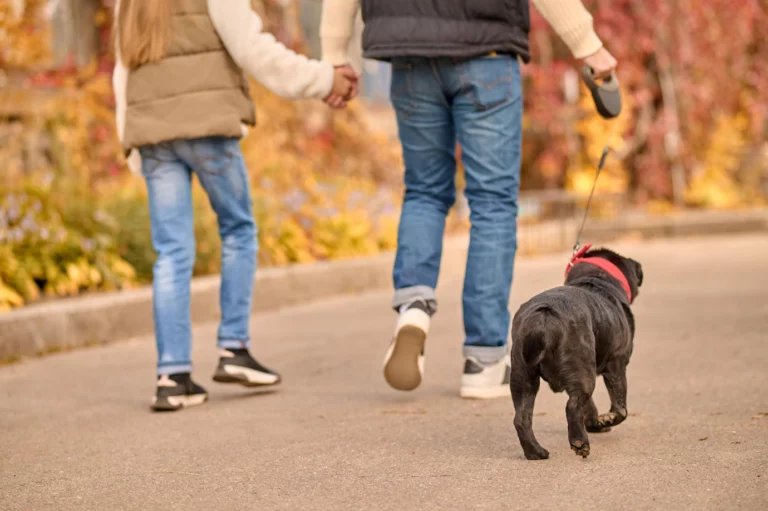
![Why is My Dog Panting at Night? [4 Reasons]](https://www.warmlypet.com/wp-content/uploads/2022/12/why-is-my-dog-panting-at-night-768x513.webp)
